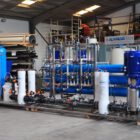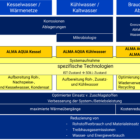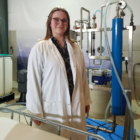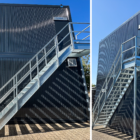Membrane bi oreactors (MBR) are an innovative and highly efficient solution for wastewater treatment that combines biological processes with modern membrane technology. These systems are particularly suitable for applications where the highest purification standards are required, such as municipal wastewater treatment, the food industry or water-intensive production processes.
The membrane activated sludge plant overcomes the limitations of traditional activated sludge processes by using membranes for solid-liquid separation, resulting in a more compact design, improved water quality and higher operating efficiency.
Table of contents
How the membrane aeration system works
The membrane activated sludge plant combines biological purification with the physical separation of solids. The process can be divided into the following main steps:
Biological treatment: The wastewater is biologically treated by microorganisms in an aeration tank. These microorganisms break down organic impurities (COD/BOD) and nutrients such as nitrogen and phosphorus.
Solid-liquid separation using membranes: Instead of a conventional secondary clarifier, solid-liquid separation takes place using membrane modules. The membranes efficiently filter out sludge and microorganisms so that only the purified water (permeate) leaves the system.
Sludge recirculation: The retention of biomass by the membranes ensures a high sludge concentration in the system, which improves biological purification and reduces reactor volumes.
Components of a membrane aeration system
1st aeration tank:
Place of biological purification by microorganisms.
Aeration systems ensure oxygen supply and mixing.
2. membrane modules:
The core component of the MBR system, consisting of ultrafiltration or microfiltration membranes.
Membrane materials such as PVDF or PES ensure chemical resistance and durability.
3. control unit:
Controls operating parameters such as fluid flow, aeration rates and membrane cleaning.
4. cleaning system (CIP):
Chemical cleaning cycles remove fouling and deposits from the membrane surface.
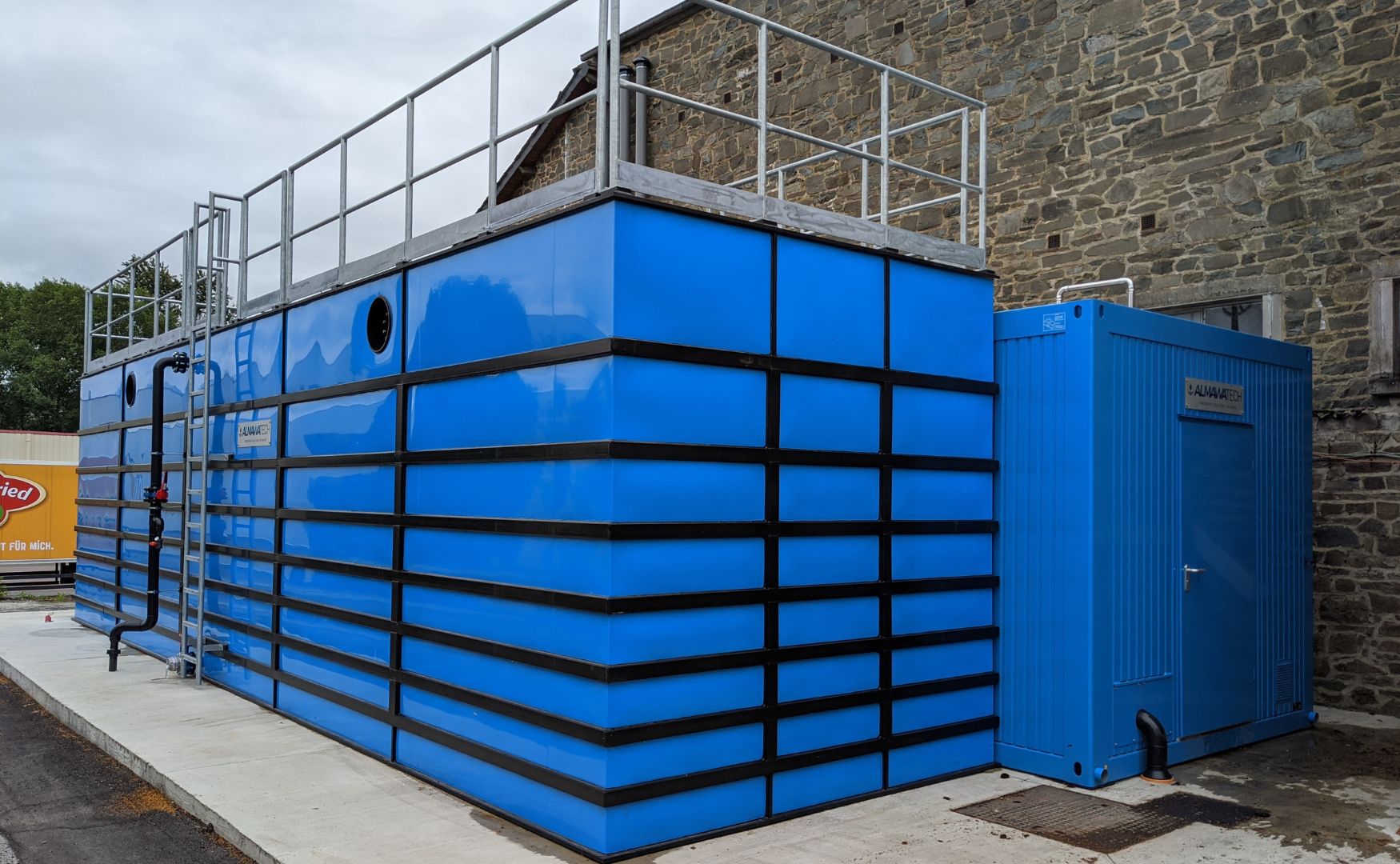
Photo: Compact membrane bioreactor in modular design(ALMA BIO MBR)
Advantages of the membrane aeration system
1. high cleaning performance:
Removal of suspended particles, bacteria and viruses through the membranes.
Achievement of very low COD, BOD and nutrient values.
2. compact design:
The elimination of secondary clarifiers reduces the space required.
Higher biomass concentrations in the reactor lead to smaller treatment volumes.
3. improvement of the water quality:
The permeate is suitable for water reuse, e.g. as process water.
4. reliability:
No sludging through of suspended matter or solids.
Stable performance even with varying wastewater loads.
Challenges and solutions
1. fouling and scaling:
Problem: Deposits of biomass or inorganic substances can impair the membrane performance.
Solution: Regular chemical cleaning (CIP), optimized ventilation and continuous monitoring of operating parameters.
2. energy consumption:
Problem: Aeration and membrane operation require more energy.
Solution: Use of energy-efficient ventilation systems and optimized membrane modules.
3. costs:
Problem: Higher investment costs compared to conventional systems.
Solution: Lower operating costs due to reduced sludge volume and water reuse compensate for the initial investment.
Applications of membrane aeration systems
1. municipal wastewater treatment:
Top performance in the removal of suspended solids and organic contamination.
Use in wastewater treatment plants with limited space.
2. industrial wastewater treatment:
Treatment of wastewater from the food and beverage industry, the pharmaceutical industry and chemical production.
Adaptable to complex and varying wastewater compositions.
3. water recycling:
Pre-treatment of the wastewater to prevent biofouling on a downstream reverse osmosis system.
4. special applications:
Used in hospitals for the treatment of infectious waste water.
Use in small, decentralized wastewater treatment systems.
Conclusion
Membrane aeration systems offer an outstanding combination of efficiency, flexibility and environmental friendliness. They are ideal for applications where space, water quality and sustainability are critical factors. With the right planning, maintenance and operating strategy, these systems can play a key role in modern water and wastewater technology.
For further information on our products, please feel free to contact us at any time!




